When it comes to exploring the northern region of Thailand, two prominent cities often come to mind: Chiang Mai and Chiang Rai.
These sister cities are located a few hours’ drive apart and offer distinct experiences for travelers seeking a taste of local culture, history, and natural beauty.
Chiang Mai, known as the “Rose of the North,” is the larger and more cosmopolitan of the two cities. It boasts a bustling night market, ancient temples, and a vibrant arts and crafts scene.
Visitors can also explore lush mountains, elephant sanctuaries, and indulge in traditional Thai massages and cuisine.
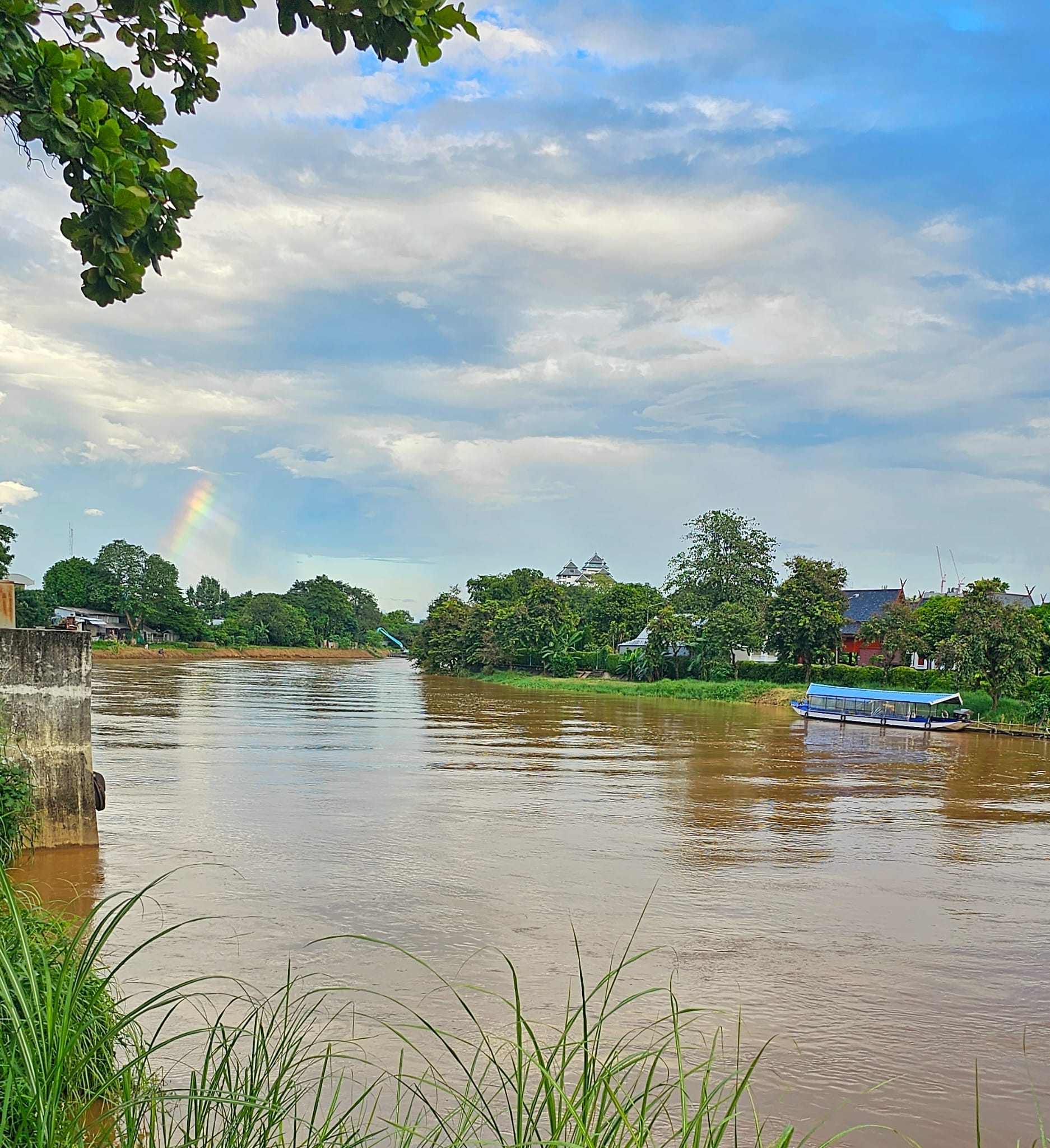
On the other hand, Chiang Rai is a more laid-back and tranquil destination, known for its stunning White Temple (Wat Rong Khun), the Blue Temple (Wat Rong Suea Ten), and the Black House (Baan Dam Museum).
This city offers a more off-the-beaten-path experience, with fewer crowds and a slower pace of life.
Ultimately, whether you choose Chiang Mai or Chiang Rai, both cities offer unique and unforgettable experiences for travelers looking to immerse themselves in the beauty of northern Thailand.
Is Chiang Rai Better Or Chiang Mai?
Are you struggling to decide between Chiang Mai and Chiang Rai for your upcoming trip to Thailand? Let me help you make the right choice!
When comparing Chiang Mai vs Chiang Rai, it’s important to consider your itinerary and the things to do in Chiang each city offers.
Both cities have their own unique value for money and offer a taste of Thailand’s and Asia’s cultural heritage.
Whether you’re interested in nightlife, Buddhist temples, or waterfalls, there is something for everyone in these cities in northern Thailand.
If you don’t mind a short bus ride, a day trip from Chiang Mai to Chiang Rai is definitely worth considering.
Ultimately, your choice between Chiang Mai vs Chiang Rai will depend on your time in Thailand and what you hope to experience even if you spend a month in Thailand.
Both cities have their own charm and attractions, so why not visit one on your 2024 trip to Thailand?
We have visited Thailand a handful of times now and have even lived there for over a year.
Needless to say, we have explored a lot of areas of Thailand while living in Chiang Mai and have been to Chiang Rai twice!
I think it’s safe to say we have first hand experience with some of the similarities and differences between the two popular destinations, so let us show you!
1. Geography And Climate Comparison Between Chiang Mai & Chiang Rai
Imagine yourself exploring the splendid landscapes of Thailand, where the captivating Chiang Mai and the tranquil Chiang Rai stand out as gems worth discovering.
The geography of Chiang Mai, nestled in the foothills of Northern Thailand, offers a breathtaking blend of lush valleys and rugged mountains.
It’s a place where adventure meets serenity, boasting a climate that is warm yet comfortable, with the cool season bringing a pleasant breeze that makes exploring the outdoors simply irresistible.

On the other hand, Chiang Rai, slightly northeast of its cousin, presents a geography that is both mesmerizing and serene, characterized by its flat river plains surrounded by enchanting hills and mountains.
The climate here offers a slightly cooler retreat, especially in the cool season, providing a refreshing escape from the hustle and bustle of everyday life.
The rainfall patterns between the two locations are similar, yet Chiang Rai‘s cooler temperatures offer a unique charm, particularly in the mornings when a light, magical mist envelops the landscape.
Both destinations are a testament to the beauty and diversity of Thailand’s geography and climate, each providing a distinct yet equally captivating experience.
Whether you’re drawn to the energetic spirit of Chiang Mai or the tranquil allure of Chiang Rai, you’re sure to find your perfect adventure.
2. When Is The Best Time To Visit Chiang Mai And Chiang Rai?
The best time to visit Chiang Mai and Chiang Rai is generally during the cooler and drier months, which span from November to February.
During this period, the weather is mild and pleasant, making it ideal for exploring the cities’ attractions and enjoying outdoor activities.
Additionally, this time coincides with many of the region’s vibrant festivals, such as the Yi Peng Lantern Festival and the Chiang Mai Flower Festival, adding to the cultural experience.
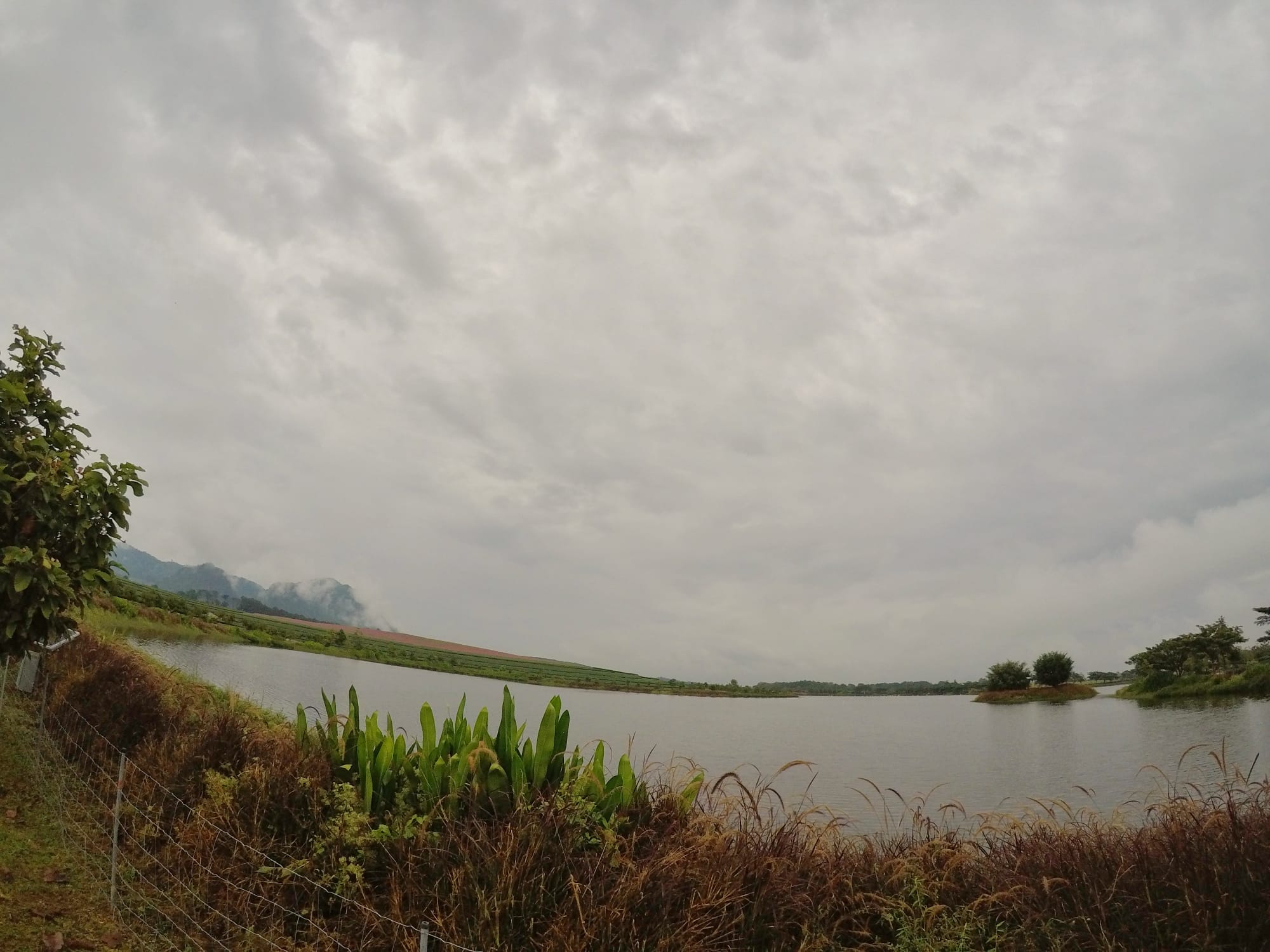
However, travelers should be aware of the “burning season,” which typically occurs from late February to April, when farmers burn fields to prepare for the next planting season.
This can result in poor air quality and visibility, which may affect those with respiratory issues. Therefore, it’s advisable to plan visits outside of this period to avoid potential health concerns.
3. Chiang Mai Vs Chiang Rai: City Sights and Temples
Embarking on a journey to the heart of Northern Thailand, where the soulful beats of Lanna culture and the whispers of ancient temples linger in the air, one is torn between two mesmerizing destinations: Chiang Rai and Chiang Mai.
If you’re a traveller on a quest for profound cultural experiences and natural wonders, these two cities should top your Northern Thailand itinerary.

The City of Chiang Mai, with its ancient Old City walls and the majestic Doi Suthep peering over it, offers an unparalleled exploration of history and spirituality.
Wander through the cobblestone alleys and you’ll find yourself amidst lively food stalls and beautiful temples like the iconic Wat Phra and Wat Chedi Luang.
The Elephant Nature Park and the awe-inspiring Doi Inthanon beckon nature lovers for an unforgettable excursion.
On the other hand, Chiang Rai, though cheaper than Chiang Mai, presents its own set of unique charms.
A stay in Chiang Rai opens up a gateway to the mystical Golden Triangle, where the borders of Thailand, Laos, and Myanmar converge along the mighty Mekong River.
The serene Wat Phra Kaew and the stunning White Temple await to enrich your spirit.
For those who want to visit the surrounding natural wonders, Chiang Mai offers attractions like the tranquil Huay Tung Tao Lake.

Festivals
Chiang Mai and Chiang Rai are two neighboring provinces in northern Thailand, each with its own unique cultural traditions and festivals.
While they share some similarities, there are also distinct differences in their festivals and events.
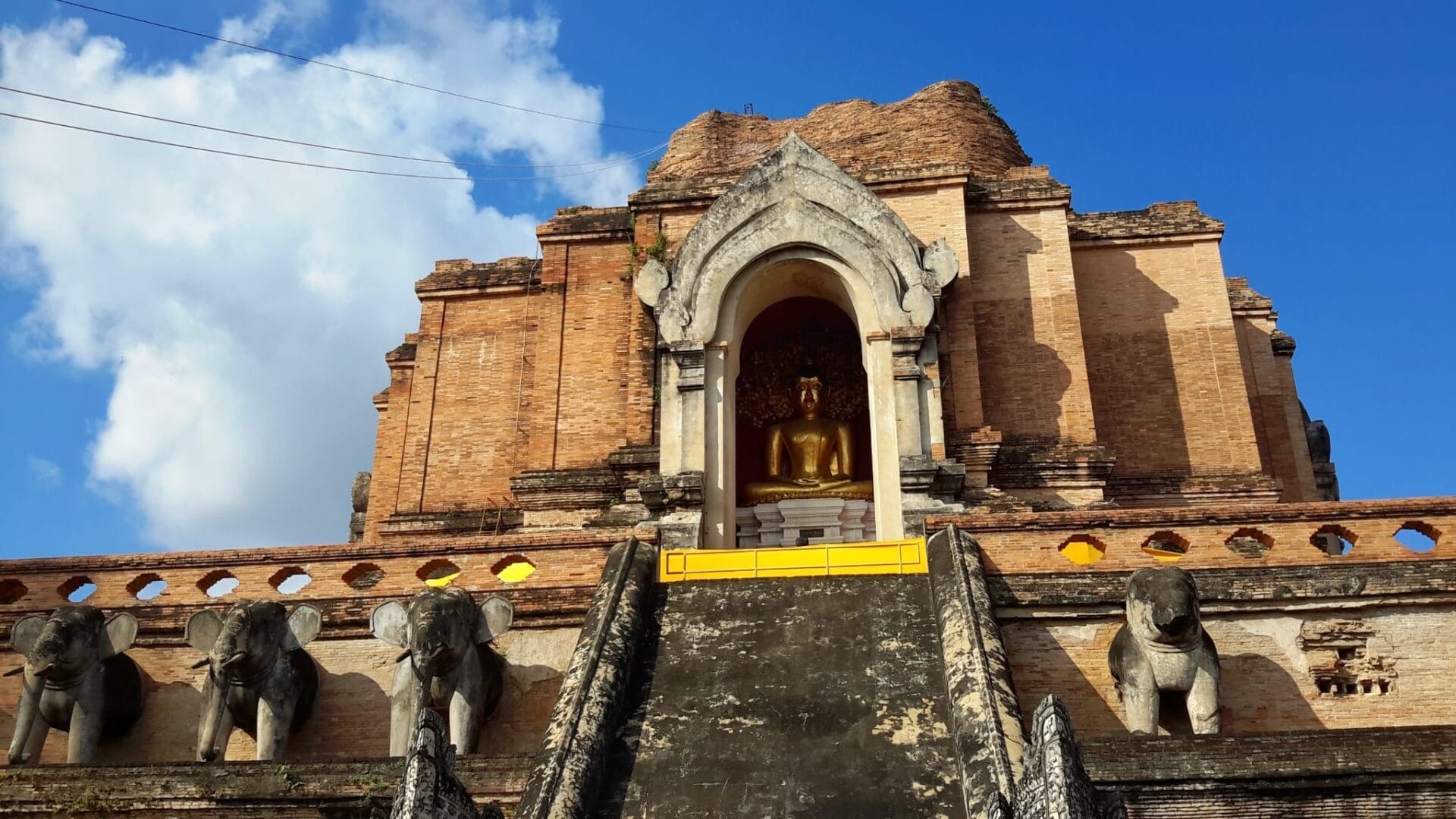
Chiang Mai:
- Songkran Festival: Celebrated in mid-April, Songkran is the Thai New Year festival and is one of the most significant events in Chiang Mai. It involves water fights, parades, and religious ceremonies.
- Yi Peng Festival: Held concurrently with Loy Krathong (the Festival of Lights), usually in November, Yi Peng is famous for its release of thousands of floating lanterns into the sky, creating a mesmerizing sight.
- Chiang Mai Flower Festival: This event, usually held in February, celebrates the region’s blooming flowers with colorful parades featuring elaborate floral floats, traditional dances, and beauty pageants.
- Chiang Mai Jazz Festival: This annual event typically takes place in February and features local and international jazz musicians performing at various venues across the city.
Chiang Rai:
- Chiang Rai Fruit Festival: Celebrated in May, this festival showcases the variety of fruits grown in the region, with exhibitions, competitions, and opportunities to sample local produce.
- Chiang Rai ASEAN Flowers Fair: Held in December, this event highlights the beauty of flowers from both Thailand and neighboring ASEAN countries, featuring floral displays, gardening workshops, and cultural performances.
- Chiang Rai Lantern Festival: Similar to Chiang Mai’s Yi Peng festival, the Lantern Festival in Chiang Rai involves releasing lanterns into the sky, usually during Loy Krathong in November.
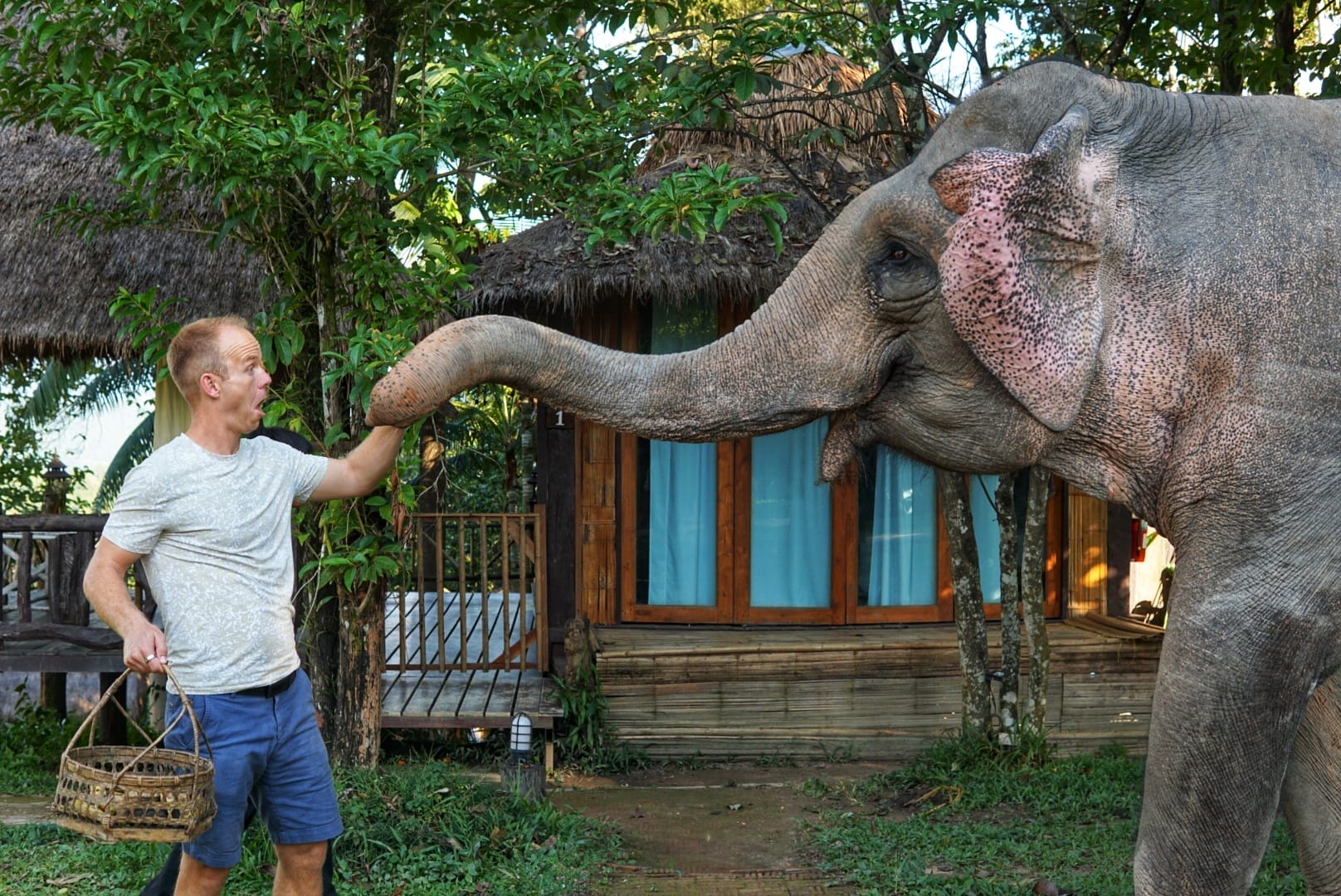
While both provinces have festivals that celebrate Thai culture, Chiang Mai’s festivals often attract larger crowds due to its popularity as a tourist destination.
Chiang Rai’s festivals, on the other hand, tend to focus more on local traditions and agricultural heritage.
4. Chaing Mai Vs Chiang Rai – Top Things To Do
Chiang Mai and Chiang Rai, offer a plethora of outdoor activities due to their natural beauty and diverse landscapes.
While there are similarities in the types of activities available in both cities, each also has its own unique offerings.

Chiang Mai:
- Trekking and Hiking: Chiang Mai is surrounded by lush mountains and jungles, making it an ideal destination for trekking and hiking adventures. Popular trekking routes include Doi Inthanon, Thailand’s highest peak, and Doi Suthep-Pui National Park.
- Elephant Sanctuaries: While the ethics of elephant tourism are debated, Chiang Mai is known for its numerous elephant sanctuaries that offer ethical interactions with these majestic animals, including feeding, bathing, and observing them in their natural habitat.
- Zip-lining and Canopy Tours: Chiang Mai offers thrilling zip-lining and canopy tour experiences, allowing visitors to soar through the treetops and enjoy breathtaking views of the surrounding forests.
- Mountain Biking: With its rugged terrain and scenic trails, Chiang Mai is a popular destination for mountain biking enthusiasts. There are numerous trails catering to all skill levels, from leisurely rides through countryside villages to challenging downhill tracks.
Chiang Rai:
- Boat Trips along the Mekong River: Chiang Rai’s proximity to the Mekong River offers opportunities for scenic boat trips, allowing visitors to explore remote villages, witness traditional river life, and visit the Golden Triangle, where Thailand, Laos, and Myanmar meet.
- Phu Chi Fa: nestled on the border between Thailand and Laos, offers an unforgettable experience with its breathtaking sunrise vistas, revealing mist-covered valleys and undulating hills. Known for its untouched natural beauty, this area remains pristine, showcasing lush forests, vibrant wildflowers, and rugged cliffs. Adventurers can explore various hiking trails leading to the summit, where panoramic views await. Depending on the season, travelers may also witness unique natural phenomena like sea clouds, enhancing the allure of this captivating destination.
Both Chiang Mai and Chiang Rai provide access to an array of natural attractions and outdoor activities, including hot springs, cycling tours, and waterfall hikes.
In both provinces, visitors can indulge in rejuvenating experiences at natural hot springs, immersing themselves in mineral-rich waters known for their therapeutic properties.
These hot springs offer a tranquil escape amidst scenic surroundings, allowing travelers to unwind and relax.
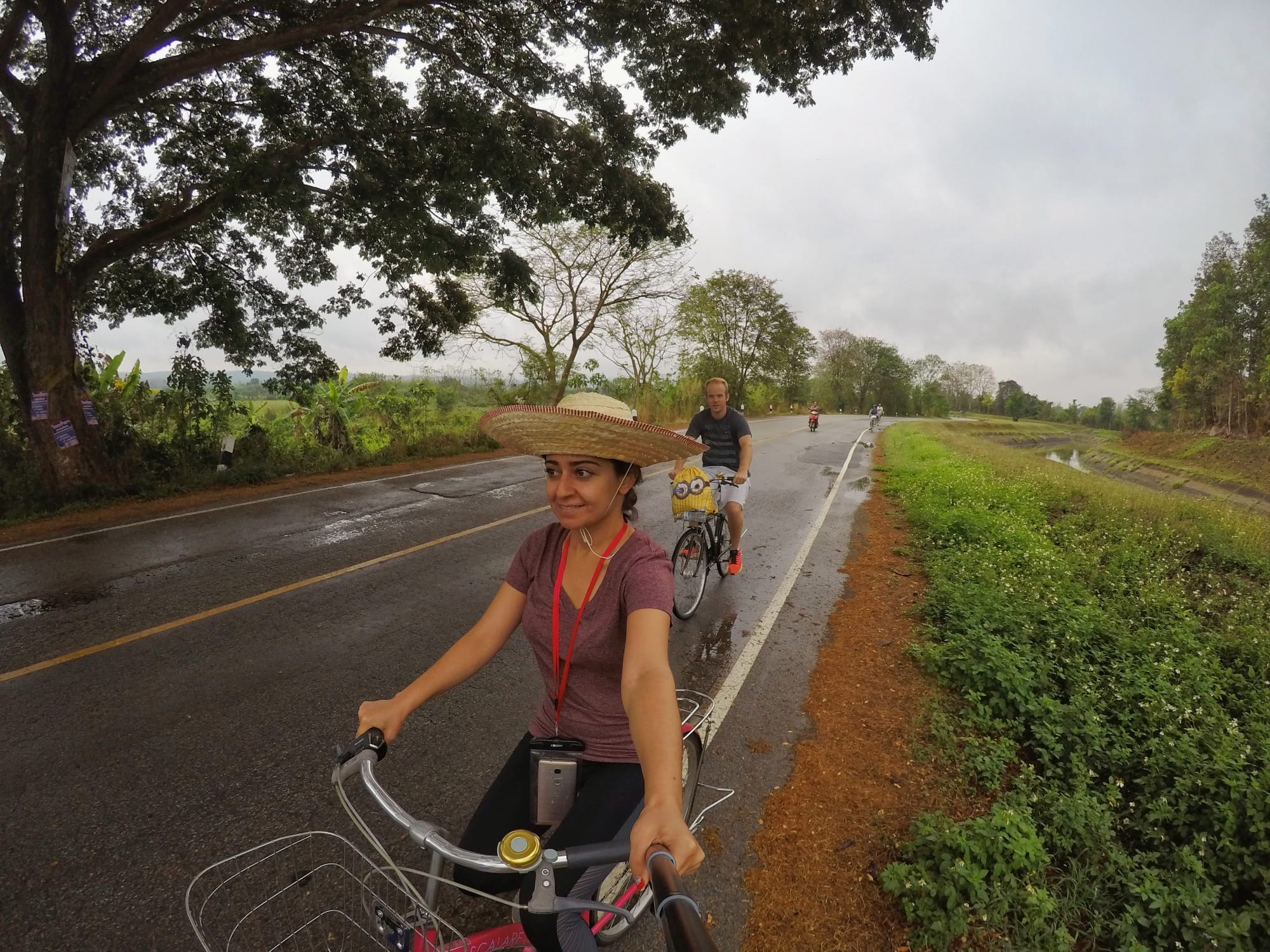
Moreover, both destinations boast excellent cycling routes that cater to all levels of experience.
Whether it’s leisurely rides through picturesque countryside landscapes or more challenging routes through rugged terrain, cyclists can explore the beauty of northern Thailand at their own pace.
With opportunities to pedal past verdant rice paddies, charming villages, and lush forests, cycling tours in Chiang Mai and Chiang Rai offer a unique way to immerse oneself in the region’s natural splendor.
Additionally, both provinces are home to stunning waterfalls that beckon adventurers to embark on memorable hikes.
From cascading torrents of water to serene natural pools, these waterfalls provide refreshing respites from the tropical heat and offer opportunities for swimming, picnicking, and photography.
Trails leading to these waterfalls wind through lush jungles, offering glimpses of diverse flora and fauna along the way, creating unforgettable experiences for nature enthusiasts.
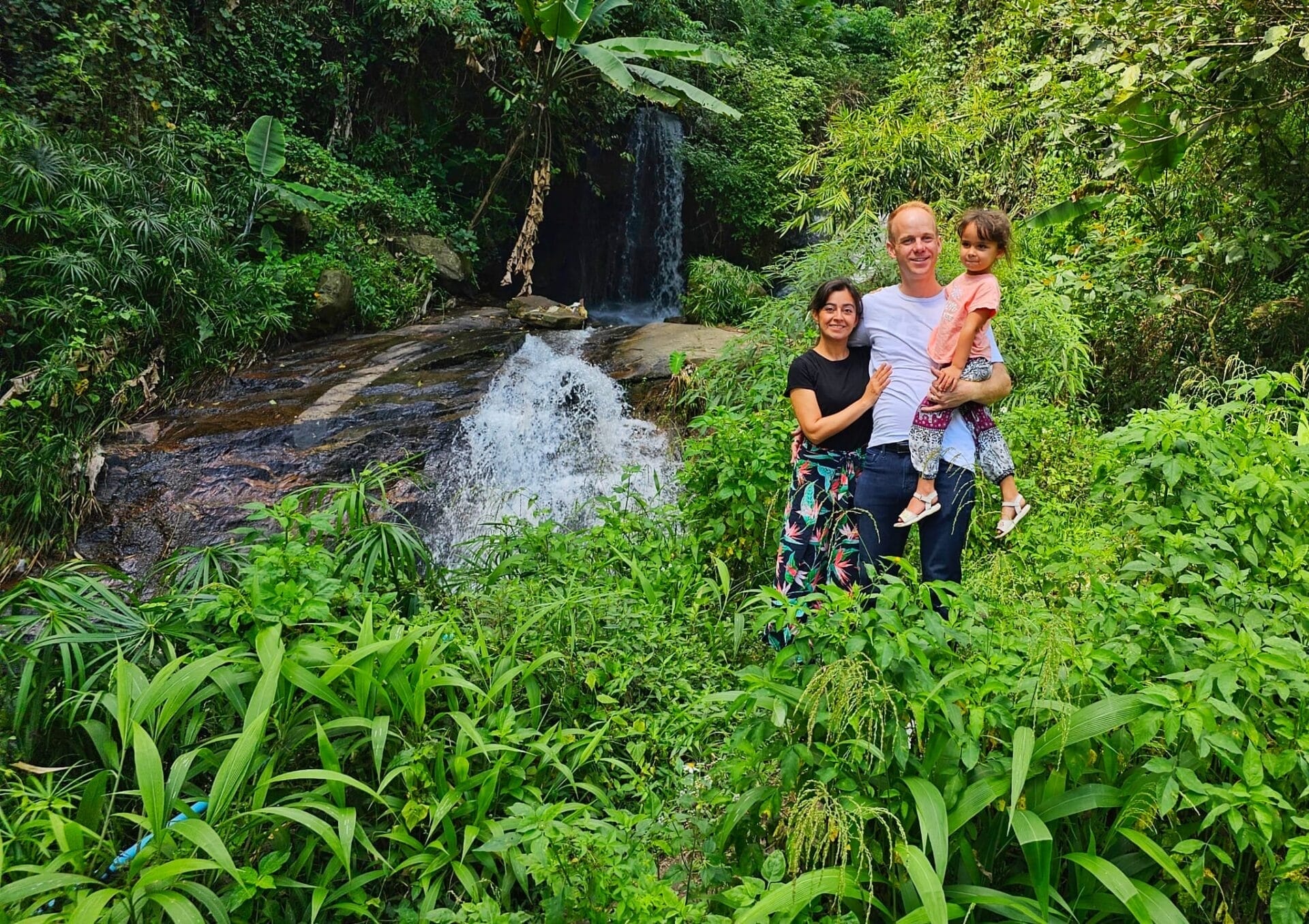
5. Chiang Rai Vs Chiang Mai: Day Trips
When deciding between Chiang Mai and Chiang Rai for day trip options, it’s essential to consider various factors like:
- Proximity to Bangkok
- Accommodation options like hostels
- Available tours
- Ease of taking day trips around the city
- Assistance with booking
- Keeping your budget in mind (in terms of Thai Baht)
Chiang Mai, being a larger and more tourist-centric city, offers a plethora of day trip options for visitors.
Located closer to Bangkok compared to Chiang Rai, it’s more accessible for travelers seeking quick getaways.
The city is replete with hostel accommodations catering to budget-conscious travelers, offering a convenient base for exploring the surrounding areas.
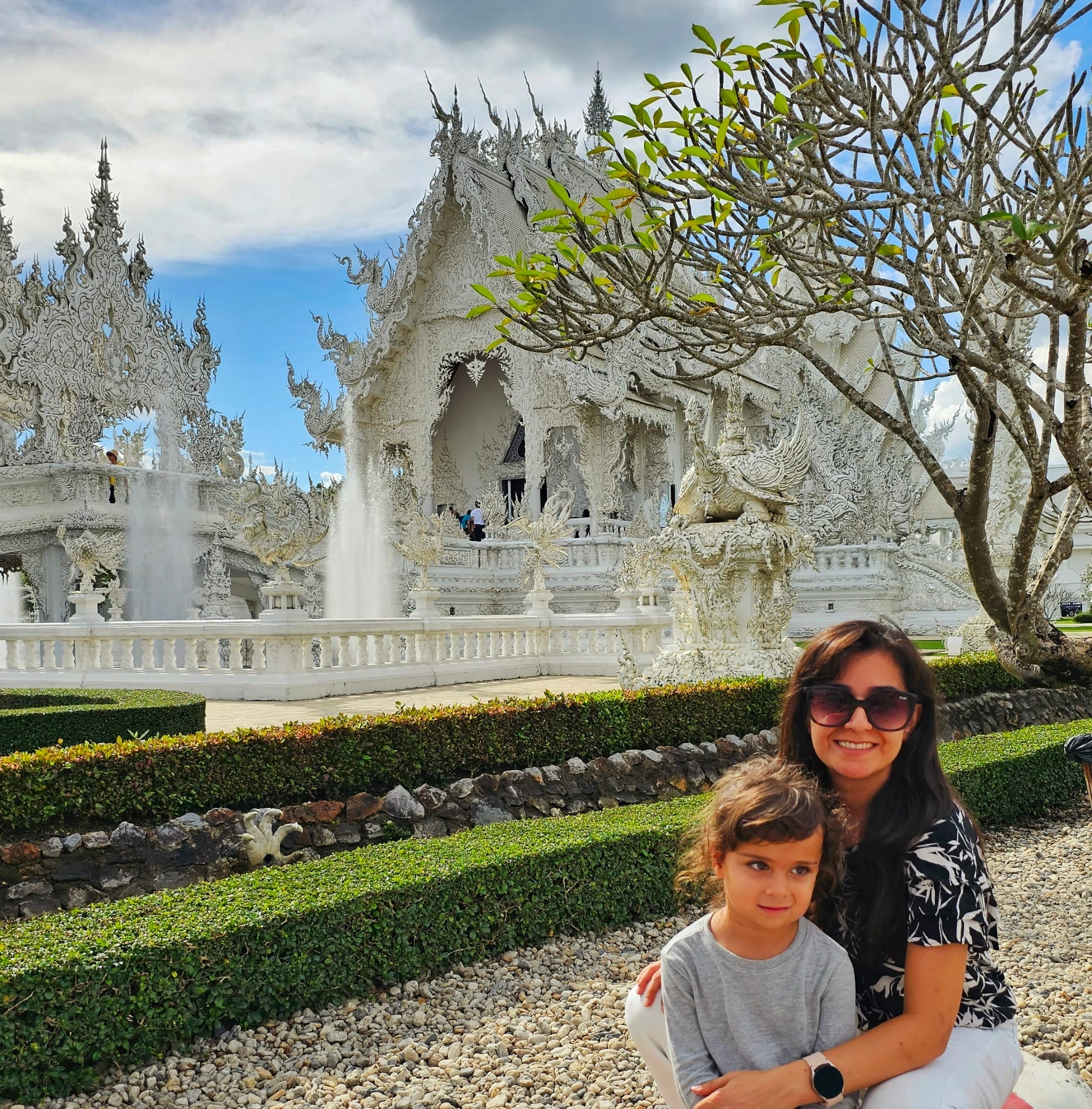
Chiang Mai tours range from cultural excursions to outdoor adventures, including visits to hill tribe villages, elephant sanctuaries, and lush national parks.
Booking these tours is relatively straightforward, with numerous agencies and online platforms offering a wide selection of options at varying price points, making it easy to find something that fits your budget.
In contrast, while Chiang Rai may be a bit farther from Bangkok, it still provides excellent day trip opportunities for visitors.
The city has a more laid-back vibe compared to Chiang Mai, making it an ideal destination for those seeking a quieter getaway.
Hostel accommodations are also available in Chiang Rai, albeit in fewer numbers compared to Chiang Mai.
However, the city makes up for it with its charming guesthouses and boutique hotels.
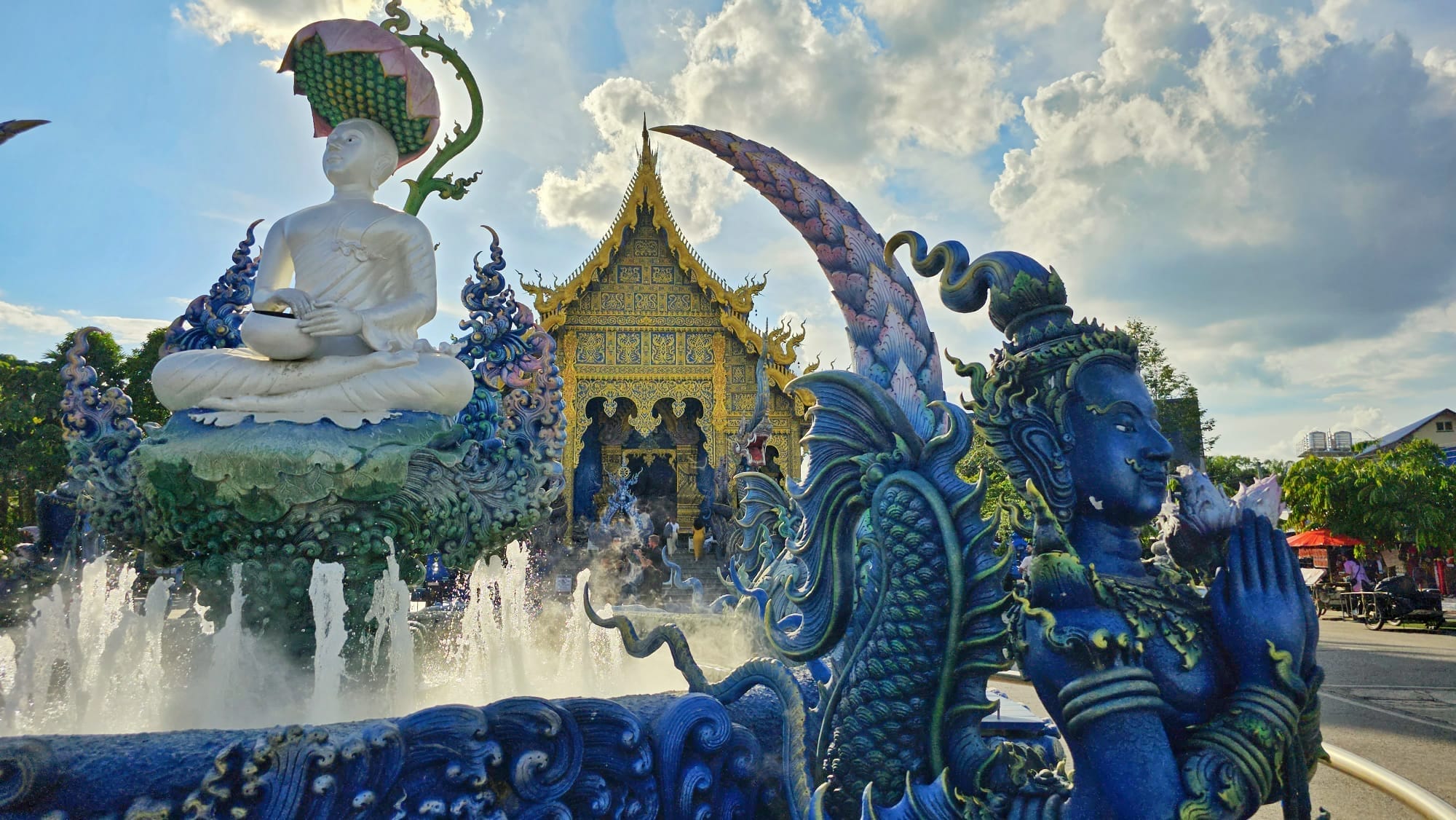
Chiang Rai tours often focus on exploring the unique cultural and natural attractions of the region, including visits to the famous White Temple (Wat Rong Khun), the Golden Triangle, and picturesque tea plantations.
While there may be fewer tour options compared to Chiang Mai, assistance with booking is readily available through local tour operators and accommodations, ensuring a hassle-free experience.
Whichever city you are visiting we highly recommend staying long enough to take a day trip to one of the amazing destinations close by.
6. Chiang Mai Vs Chiang Rai – Restaurants And Street Food
When it comes to culinary delights, Chiang Mai and Chiang Rai both boast an impressive array of restaurants and street food options that tantalize taste buds and leave foodies clamoring for more.
However, each city offers its own unique gastronomic experiences, adding a flavorful twist to the decision of which city to visit.

Chiang Mai, the more seasoned contender in the culinary arena, flaunts its vibrant food scene with an impressive lineup of restaurants and street vendors.
From aromatic curries and sizzling stir-fries to mouthwatering khao soi noodles, Chiang Mai serves up a feast fit for kings and commoners alike.
The city’s bustling night markets, such as the iconic Night Bazaar and Warorot Market, lure hungry travelers with an irresistible medley of local delicacies and international fare.
Whether you’re craving traditional Northern Thai dishes or international cuisine with a local twist, Chiang Mai’s restaurant scene promises to satisfy even the most discerning palate.
On the other hand, Chiang Rai, the underdog in the foodie fight, may lack the culinary clout of its neighbor, but it more than holds its own with its hidden culinary gems and innovative street food offerings.
While Chiang Rai’s dining scene may not be as extensive as Chiang Mai’s, it compensates with its authentic flavors and charming local eateries.
Travelers can embark on a culinary adventure through the city’s bustling markets, sampling regional specialties like sai ua (Northern Thai sausage) and nam prik num (green chili dip) or indulging in fusion cuisine that combines traditional recipes with modern flair.

So, when deciding between Chiang Mai and Chiang Rai, remember that while Chiang Mai may have the fame, Chiang Rai has the flavor.
Whether you’re a seasoned foodie or a casual diner, both cities offer a delectable journey through Northern Thai cuisine that is sure to leave you craving seconds.
After all, in the battle of the taste buds, everyone’s a winner!

7. Markets Of Chiang Mai And Chiang Rai
Chiang Mai and Chiang Rai are renowned for their vibrant markets, offering an eclectic mix of local crafts, traditional wares, and mouthwatering street food.
In Chiang Mai, the Night Bazaar stands as an iconic landmark, sprawling along the bustling streets after sunset.
Here, visitors can wander through a maze of stalls selling everything from handmade jewelry and intricate textiles to wood carvings and decorative lanterns.

The Sunday Walking Street Market is another must-visit, transforming the historic center of Chiang Mai into a lively pedestrian zone filled with artisans showcasing their talents.
Tourists flock here to sample delicious street eats like khao soi (curried noodles) and to browse through a treasure trove of souvenirs, including intricately painted parasols, embroidered fabrics, and hill tribe handicrafts.
In Chiang Rai, the Night Bazaar also offers a similar ambiance, albeit on a smaller scale compared to its counterpart in Chiang Mai.
Visitors can peruse through stalls brimming with locally made goods, from delicate silverware and woven textiles to aromatic herbal products and handmade pottery.
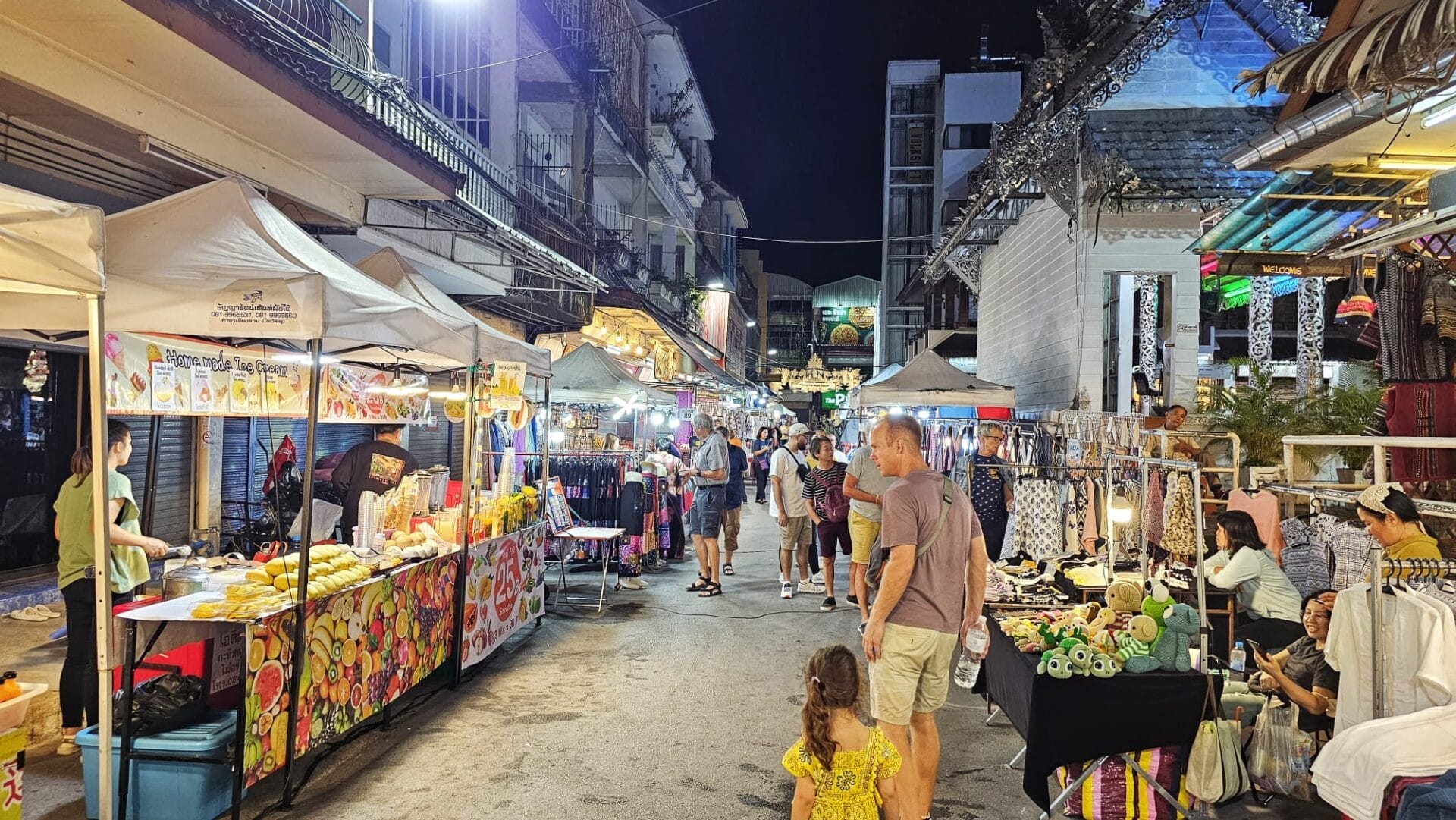
The Walking Street Market on Saturdays is a charming affair, where vendors line the streets with stalls adorned with colorful lanterns, offering a delightful array of souvenirs and handicrafts.
Here, travelers can find unique items like hand-carved wooden sculptures, tribal jewelry, and intricately woven baskets, each reflecting the rich cultural heritage of northern Thailand.
Whether in Chiang Mai or Chiang Rai, the markets offer an immersive experience where visitors can not only shop for souvenirs but also interact with local artisans and savor the flavors of authentic Thai cuisine.
8. Accommodation Options: Where To Stay In Chiang Mai and Chiang Rai
In Chiang Mai, known for its vibrant markets, historic temples, and lush landscapes, there are several standout hotels catering to various tastes.
For luxury seekers, the Dhara Dhevi Chiang Mai is a top choice.
Set amidst 60 acres of beautifully landscaped grounds, this resort offers opulent villas and suites inspired by northern Thai architecture.
With its luxurious amenities including multiple pools, spa facilities, and fine dining restaurants, Dhara Dhevi is perfect for those seeking indulgence and tranquility.

For travelers seeking a blend of luxury and cultural immersion, the 137 Pillars House is an excellent option.
This boutique hotel, located in the heart of the city, combines historic charm with modern comforts.
Set within a restored teak wood house, the hotel offers elegantly appointed suites, lush gardens, and a serene spa.
Its central location allows guests easy access to Chiang Mai’s attractions while providing a peaceful retreat.
For those on a mid-range budget looking for comfort and convenience, the Ping Nakara Boutique Hotel & Spa offers a charming stay.
Set in a colonial-style building, this boutique hotel exudes old-world charm with its elegant interiors and personalized service.
Guests can relax in the tranquil courtyard garden, indulge in spa treatments, and savor delicious Thai cuisine at the onsite restaurant.
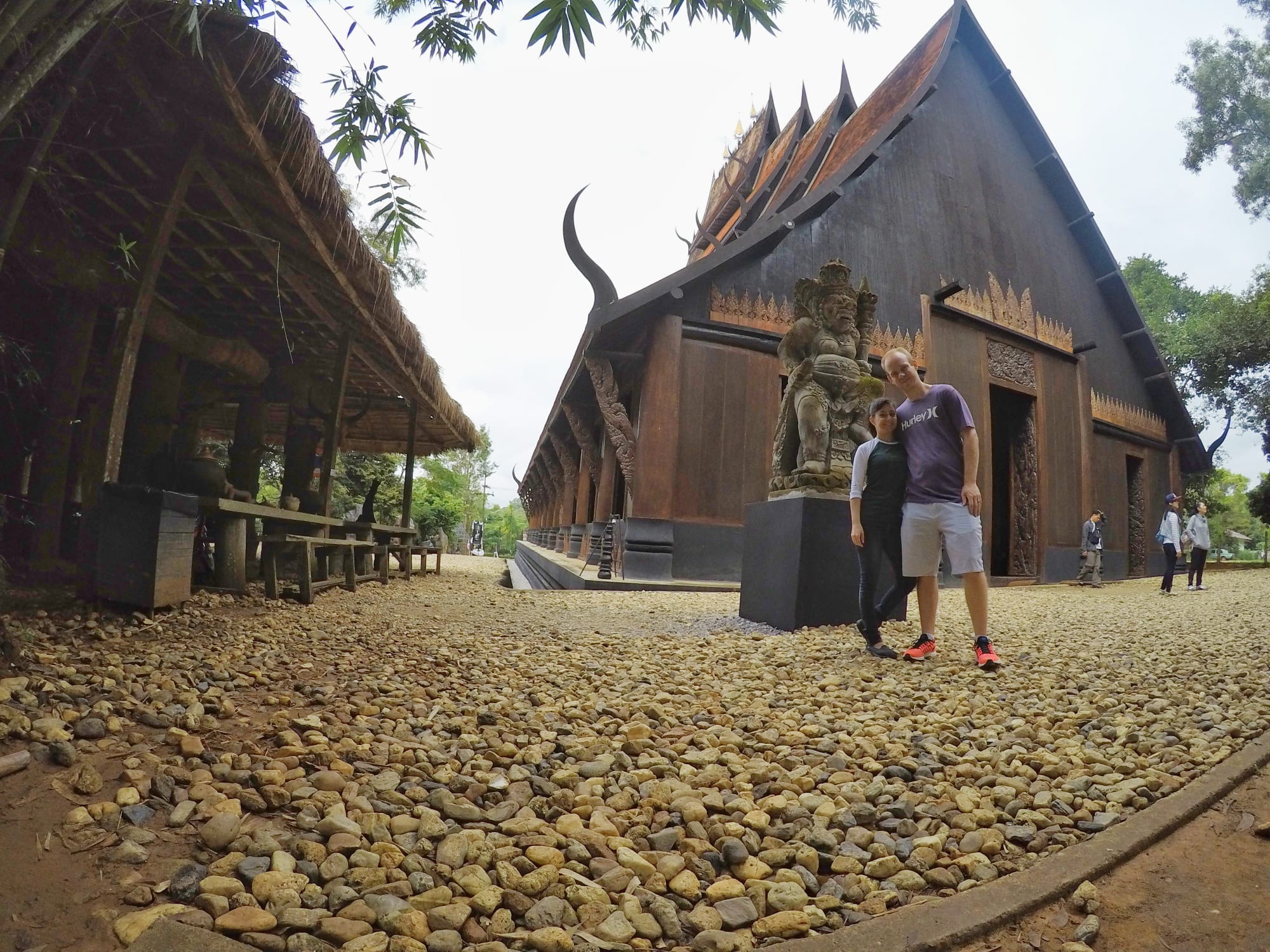
In Chiang Rai, a city renowned for its stunning temples and picturesque landscapes, accommodation options cater to a range of preferences.
For a luxurious retreat with breathtaking views, the Anantara Golden Triangle Elephant Camp & Resort is unmatched.
Perched on a ridge overlooking the Mekong River and the hills of Myanmar and Laos, this resort offers luxurious rooms, exquisite dining options, and unique experiences such as elephant encounters and spa treatments inspired by traditional Thai therapies.
For travelers seeking a tranquil escape amidst nature, the Le Meridien Chiang Rai Resort provides a serene oasis.
Nestled along the Kok River, this resort boasts spacious rooms with river or garden views, a serene outdoor pool, and a rejuvenating spa. Its secluded location offers a peaceful retreat while still being within easy reach of Chiang Rai’s attractions.
For budget-conscious travelers, both Chiang Mai and Chiang Rai offer a plethora of guesthouses and budget options.
These range from simple guesthouses with basic amenities to backpacker hostels and budget hotels catering to the needs of budget travelers.
Popular areas such as the Old City in Chiang Mai and the Night Bazaar area in Chiang Rai are dotted with budget accommodations, providing affordable stays close to the city’s main attractions, markets, and dining options.
These budget options are ideal for travelers looking to stretch their budget without compromising on location and convenience.
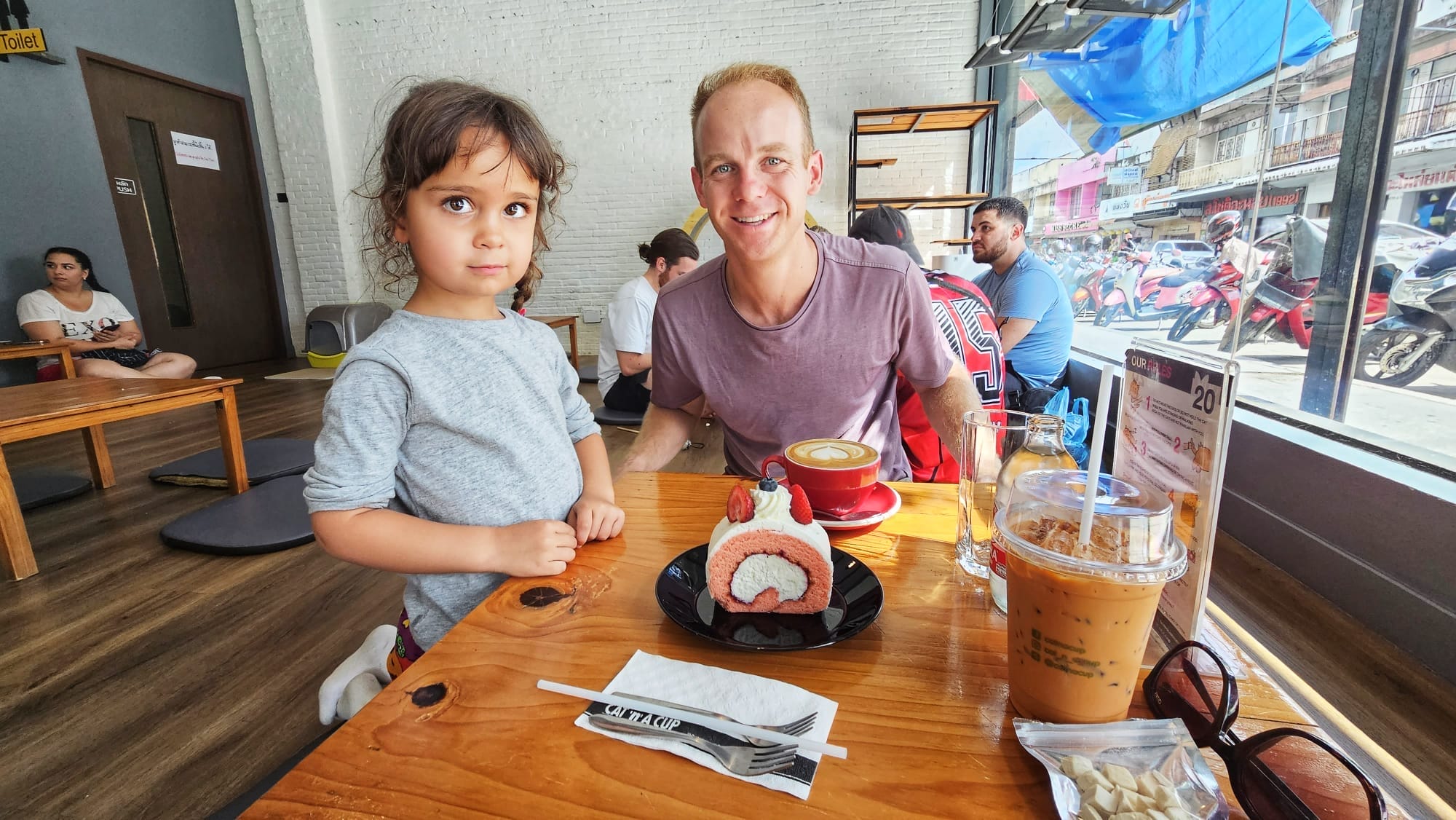
9. Getting To Chiang Mai Or Chiang Rai And Getting Around
Yes, you can visit Chiang Rai from Chiang Mai, as the two cities are relatively close to each other in northern Thailand’s travel circuit.
Chiang Rai is famed for its stunning temples in Thailand, and many travelers find it worth the visit even if they’re based in Chiang Mai.
Getting to Chiang Mai is relatively straightforward, as it’s a major transportation hub in northern Thailand.
The city is accessible by air, with an international airport serving both domestic and international flights.
Additionally, trains and buses connect Chiang Mai to other Thai cities and neighboring countries, providing convenient options for travelers.
Within Chiang Mai, getting around is easy with various transportation choices, including taxis, tuk-tuks, and songthaews (shared minibusses).
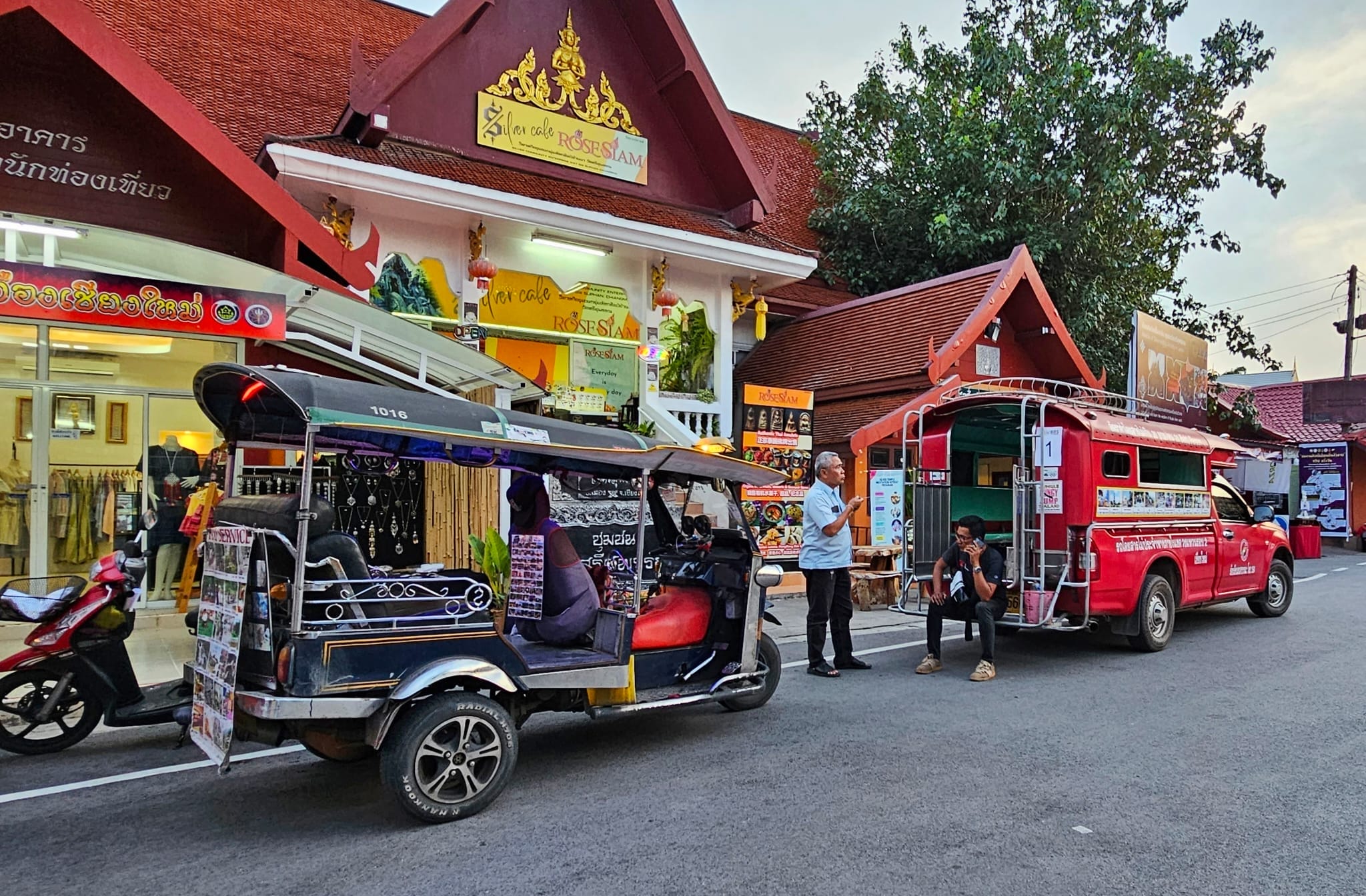
Getting to Chiang Rai from Chiang Mai is also convenient. Travelers can opt for buses, which are a popular and affordable mode of transportation between the two cities.
The journey takes around three to four hours by bus. Alternatively, travelers can also hire private taxis or join organized tours to explore Chiang Rai’s attractions.
In terms of public transportation options, both Chiang Mai and Chiang Rai offer similar services. Songthaews, or red trucks, are commonly found throughout both cities and are a convenient way to get around.
Additionally, taxis and tuk-tuks are readily available for shorter journeys or private hire.

For digital nomads and travelers planning to stay longer-term, visa regulations should be considered.
Thailand offers various visa options, including tourist visas and long-stay visas, allowing travelers to stay in the country for extended periods.
Peak season in both cities typically falls during the cooler months from November to February, so it’s advisable to book accommodations and tours in advance during this time.
Overall, while Chiang Mai is often considered the top destination in northern Thailand, Chiang Rai has its own unique charms and attractions that make it worth a visit, especially for those interested in exploring the region’s rich cultural heritage and stunning natural landscapes.
Questions To Ask When Trying To Pick Which To Visit
When deliberating between Chiang Mai and Chiang Rai for a visit, several questions can help you decide and guide your decision-making process.
Firstly, consider your interests: Are you drawn to exploring bustling markets and vibrant nightlife?
If so, Chiang Mai might be the better fit, boasting an array of markets, rooftop bars, and pubs catering to diverse tastes.
However, if you’re more inclined towards serene temple visits and cultural immersion, Chiang Rai’s tranquil ambiance and renowned temples, such as Wat Rong Khun, might hold greater appeal.
Next, factor in your itinerary preferences: Are you keen on exploring nearby destinations like Cambodia, given Chiang Rai’s proximity to the Thai-Cambodian border?
On the other hand, if you prefer to stay within northern Thailand’s enchanting landscapes, both cities offer ample opportunities for exploration, from lush jungles to picturesque countryside.
Consider the pace of life you prefer: Chiang Mai tends to attract more expats and travelers, resulting in a livelier atmosphere with activities stretching into the late hours. Conversely, Chiang Rai offers a quieter ambiance, perfect for those seeking relaxation and reflection.
Additionally, think about specific attractions you wish to experience: Do you prioritize visiting renowned Chiang Rai temples like the White Temple and Blue Temple, or are you more interested in Chiang Mai’s renowned nightlife spots?
Lastly, consider practicalities like transportation and timing: Are you comfortable with Chiang Mai’s slightly higher costs and bustling tourist scene, or do you prefer Chiang Rai’s more laid-back vibe?
Keep in mind that both cities have their charms and attractions, so regardless of your choice, you’re sure to have a memorable experience exploring northern Thailand’s enchanting destinations.



Leave a Reply